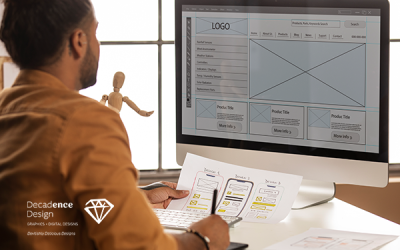It’s been another exciting twelve months in tech as consumer behaviours along with retailer brand strategies continue to evolve. Due to the coronavirus pandemic, the amount of digitalisation achieved in the past three months would usually take companies more than a year to implement. We look ahead in the hope of predicting what changing consumer trends will be like in the months to come.
Optimise for Mobile
Time spent with mobile devices continues to rise
You can bet the latest smartphone is always on everyone’s wishlist. Adults spend close to four hours on their mobile devices. That’s more time than what they devote to watching TV. This means more mobile shopping and browsing.
Always optimise for both desktop and mobile when designing websites or any artwork. Especially for website, make sure that the font and colours are easy on the eyes and readable enough when accessed through mobile phones.
Design the Shopping Experience
The in-store customer experience will continue to shift.
Consumers may opt to do more of their shopping online, that doesn’t mean they won’t still visit brick-and-mortar stores.
As retail stores open up, many are choosing to run in-store promotions and welcome-back offers to customers that they haven’t physically seen in a while. Promotional artwork should be kept clear and simple so that customers know what they are getting.
For online platforms, make your Ecommerce site user-friendly and optimised for mobile. As mentioned above, people now spend more time surfing on their mobile phone. A mobile optimisation strategy helps to encourage conversions by reducing user friction. Consider: larger buttons, smaller images, auto-fill form fields, auto-detect locations settings, guest checkout options and multiple screens instead of scrolling.
A Responsive Web Design
The most efficient way to start optimising your site for mobile is to choose a responsive design. Responsive websites conform to the screen size on which they’re viewed. The “hamburger” menu often appears instead of a top bar, and images become smaller.
Note however, that responsive design is different from mobile optimisation. Mobile optimisation simply starts with responsive design — it gives you the building blocks to create a completely mobile-ready site.
A mobile optimised design looks extremely different from a responsive site when viewed on a mobile device. It’s configured with the mobile user in mind and often has a separate URL.
The images are lighter to reduce page speed, the buttons are sized for broad fingers, and the need to pinch and scroll is minimized.
Starting with a responsive design, however, will take you in the right direction.
Your website will appear attractive and remain navigable for all visitors, which is the first step toward improving conversion rates on mobile devices.
If you’re a WordPress user, you can find free WordPress themes that incorporate responsive design on the official website. Alternatively, consider searching for premium themes. Nearly all of them have been updated as responsive.





